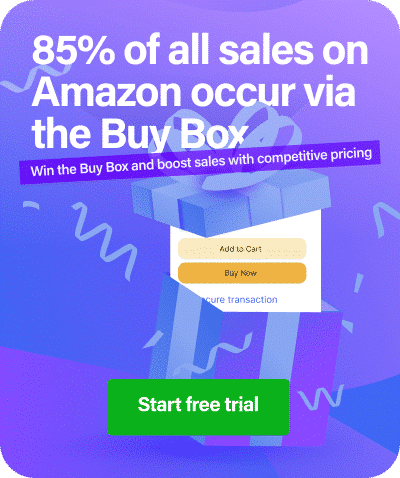Imagine this: you’ve sourced what you think is a simple electronic product, maybe a power bank or Bluetooth speaker, only to discover Amazon has flagged it as hazardous material (hazmat). Suddenly, your straightforward pricing strategy becomes a complex puzzle involving special storage fees, shipping restrictions, and compliance requirements. If you’re selling products classified as dangerous goods on Amazon, you’re not alone in navigating these murky waters.
The key insight? Repricing hazardous materials requires a fundamentally different approach than standard products. While regular items compete primarily on price and features, hazmat products operate under a unique set of rules that can make or break your profitability. Understanding these nuances isn’t just about compliance—it’s about turning regulatory complexity into competitive advantage.
Understanding Amazon’s Hazmat Landscape
Amazon’s definition of dangerous goods extends far beyond what most people consider “hazardous.” Products that may be considered hazmat or dangerous goods include laptops, cameras, cell phones, tablet devices, tools, and chargers. Products that contain magnets, such as speakers, headphones, and children’s toys. Chemical-based products like glue, dyes, and aerosol products.
The hazmat review process begins the moment you create a listing for a potentially dangerous product. Amazon may subject your product to a HazMat review, in which case, they will require that you submit additional documentation. In such a scenario, you generally have two options: Submit a Safety Data Sheet (SDS): If your product is classified as dangerous goods. Provide an SDS Exemption Sheet if your product is not classified as dangerous goods.
This review process typically takes about two business days, but the implications for your pricing strategy start immediately. Unlike standard products that can begin generating sales revenue as soon as they’re listed, hazmat products face potential delays that must be factored into your pricing calculations.
The Three-Tier Classification System
Amazon classifies dangerous goods into three categories that directly impact your repricing strategy:
Non-DG (Non-Dangerous Goods): Your product cleared the review with no restrictions. Standard repricing rules apply.
Restricted DG: For Amazon to deliver your product, you need to enroll in the FBA Dangerous Goods program. Existing inventory may need to be transferred to a fulfillment center capable of handling dangerous goods (FBA initiates this transfer itself). Additional units may be sent to fulfillment centers, but these products count toward your seller’s dangerous goods inventory limit.
Unfulfillable DG: Amazon found your product to be too dangerous for delivery and will not fulfill it. As a seller, you must create a removal order for the inventory and sell it through FBM.
Each classification requires a different pricing approach, particularly when setting minimum prices in your repricing tools.
The Hidden Costs of FBA Dangerous Goods
Storage Fee Premium
Products classified as dangerous goods (e.g., certain chemicals, batteries) also incur higher fulfillment fees. The increase isn’t huge, but expect to pay a bit more. For instance, a small standard hazmat item (10 oz) costs about $3.43 versus ~$3.31 for a non-hazmat equivalent.
While the difference appears minimal—about 12 cents per unit—this adds up quickly at scale. For a seller moving 1,000 units monthly, that’s an additional $120 in fulfillment fees alone.
FBA hazmat storage fees operate under the same tiered structure as regular products but with additional considerations. Dangerous goods are stored in a separate Amazon warehouse. This can lead to increased costs for storage and delivery compared to regular items.
Shipping Restrictions and Geographic Limitations
One of the most overlooked aspects of repricing hazmat products involves shipping restrictions hazmat products face. Effective April 25, 2022, dangerous goods can no longer be shipped to US island destinations through the Amazon FBA program, even in limited quantities. Third-party companies must be used instead.
This geographic limitation reduces your total addressable market, which should influence your minimum price calculations. If you’re competing against sellers using Fulfillment by Merchant (FBM), which can ship to these restricted areas, you may need to accept lower profit margins on available markets to maintain competitiveness.
The Approval Bottleneck
The FBA dangerous goods program pricing strategy must account for approval delays and program access limitations. You can apply to join the FBA dangerous goods program inside Seller Central, but the wait times are generally unknown. Amazon also closes off the program entirely at times and doesn’t even accept people onto the waitlist.
This uncertainty creates a unique pricing dynamic. Sellers already in the program have a significant advantage and can often maintain higher prices due to reduced competition.
Competitive Dynamics in the Hazmat Space
Analyzing Competitor Hazmat Sellers
Competitor hazmat sellers operate in a fundamentally different competitive landscape. Traditional competitor analysis focuses on price, reviews, and listing optimization. However, hazmat competitor analysis must include:
- Program Participation Status: Which competitors are enrolled in the FBA Dangerous Goods program versus those selling via FBM
- Compliance History: Sellers with established hazmat approval processes can respond more quickly to market changes
- Geographic Coverage: Understanding which competitors can ship to restricted areas
The Compliance Advantage
Sellers who master hazmat compliance often find themselves in less competitive markets. If Amazon classifies your product as a dangerous good, your sales may be impacted. Amazon may pause your listing while it requests additional documentation from you. This downtime can be frustrating, but it is unavoidable.
This creates opportunities for established hazmat sellers. When competitors face compliance delays, you can temporarily raise prices to capture increased demand. However, your repricing strategy should include rules to quickly lower prices when competitors return to the market.
Strategic Repricing for Hazmat Products
Setting Intelligent Minimum Prices
The foundation of a successful pricing strategy for dangerous goods lies in calculating true minimum prices that account for all hazmat-specific costs:
Standard Product Minimum Price Formula:
Product Cost + Amazon Fees + Shipping + Target Profit Margin = Minimum Price
Hazmat Product Minimum Price Formula:
Product Cost + Amazon Fees + Hazmat Premium + Extended Storage Risk + Compliance Costs + Geographic Limitation Adjustment + Target Profit Margin = Minimum Price
When configuring your repricing tool’s min/max prices, factor in:
- Hazmat fulfillment fee premium (typically $0.10-$0.15 per unit)
- Extended storage costs from potential approval delays
- Compliance documentation costs (amortized across expected sales volume)
- Opportunity cost from geographic shipping restrictions
Dynamic Pricing for Compliance Cycles
Hazmat products experience unique pricing cycles tied to Amazon’s review processes. Smart Amazon hazmat repricing strategies anticipate these patterns:
- Pre-Review Phase: Maintain competitive pricing while competitors are active.
- Review Period: Temporarily increase prices when competitors face compliance delays.
- Post-Approval Phase: Quickly adjust prices down as competitors return to the market.
Seasonal Considerations
Many hazmat products experience seasonal demand spikes that interact uniquely with Amazon’s fee structure. During the Q4 peak months (October–December), the standard-size storage fee jumps to $2.40 per cubic foot per month (roughly 3× higher).
For hazmat products, this seasonal storage fee increase is particularly impactful because:
- Dangerous goods often have lower inventory turnover rates
- Compliance delays can extend storage periods
- Holiday shipping restrictions may apply to certain hazmat categories
Advanced Repricing Strategies
Category Approval Leverage
Category approval for hazmat creates unique pricing opportunities. Once you’ve navigated the approval process for a specific hazmat category, you can often apply similar products more efficiently. This operational advantage should be reflected in your repricing strategies.
Consider building a portfolio of related hazmat products within approved categories. This approach allows you to:
- Amortize compliance costs across multiple products
- Develop expertise in specific hazmat regulations
- Create barriers for new competitors
The FBM Alternative Strategy
When FBA becomes prohibitively expensive or restrictive, your best pricing strategy for dangerous goods might involve a hybrid approach. If a product is marked as hazmat, you can create an alternate SKU with Fulfillment by Merchant (FBM) to keep selling your product.
This strategy requires careful price calculation:
- FBM typically requires higher prices to maintain margins
- You lose Prime eligibility, affecting competitiveness
- You gain geographic flexibility to reach restricted areas
Understanding the pros and cons of Amazon FBA becomes crucial when deciding between FBA and FBM for hazmat products.
Technology Integration
Modern repricing tools must be configured to handle hazmat complexity. Key features to leverage:
- Custom minimum price rules based on hazmat classification
- Competitor-specific adjustments for program participation status
- Geographic pricing variations for shipping restrictions
- Seasonal adjustment factors for storage fee fluctuations
Monitoring and Optimization
Key Performance Indicators
Traditional Amazon KPIs require modification for hazmat products:
- Buy Box Win Rate: More critical due to limited competition
- Inventory Velocity: Factor in compliance delays and storage fee risks.
- Geographic Performance: Track performance by shipping zone.
- Compliance Cost per Unit: Monitor documentation and approval expenses
Continuous Optimization Process
Successful hazmat repricing requires ongoing refinement:
- Weekly Price Analysis: Review competitor compliance status changes
- Monthly Cost Review: Update minimum prices based on actual fee data
- Quarterly Strategy Assessment: Evaluate program participation benefits
- Annual Compliance Audit: Ensure documentation remains current
Use insights from your repricing tool to identify patterns specific to your hazmat categories.
Conclusion: Turning Complexity into Competitive Advantage
Repricing hazardous materials on Amazon presents unique challenges that many sellers find overwhelming. However, those who master the complexity often discover significant competitive advantages. The key lies in understanding that hazmat products operate under different rules—from classification through compliance to customer delivery.
The bottom line: successful hazmat repricing requires treating compliance as a core business competency, not just a regulatory hurdle. By factoring hazmat-specific costs into your minimum prices, monitoring competitor compliance status, and leveraging program participation advantages, you can build sustainable competitive moats in these specialized markets.
Remember, while the complexity may seem daunting, the reduced competition and higher barriers to entry often result in more stable pricing and better profit margins for those willing to invest in proper compliance and strategic repricing systems.
Whether you’re just starting with hazmat products or looking to optimize existing operations, the investment in understanding these dynamics pays dividends through improved profitability and reduced competitive pressure. The sellers who thrive in the hazmat space are those who embrace the complexity rather than avoid it.





